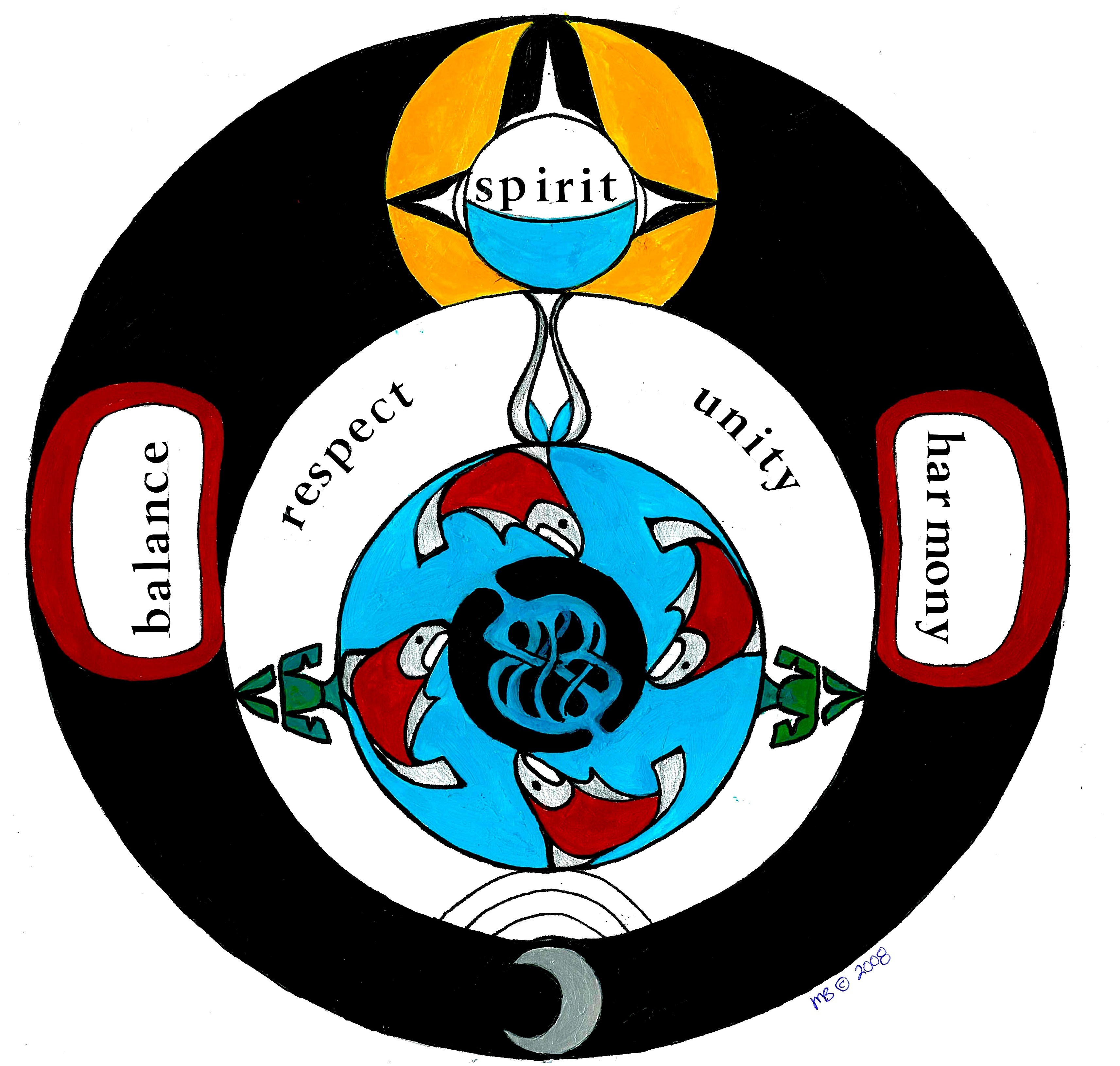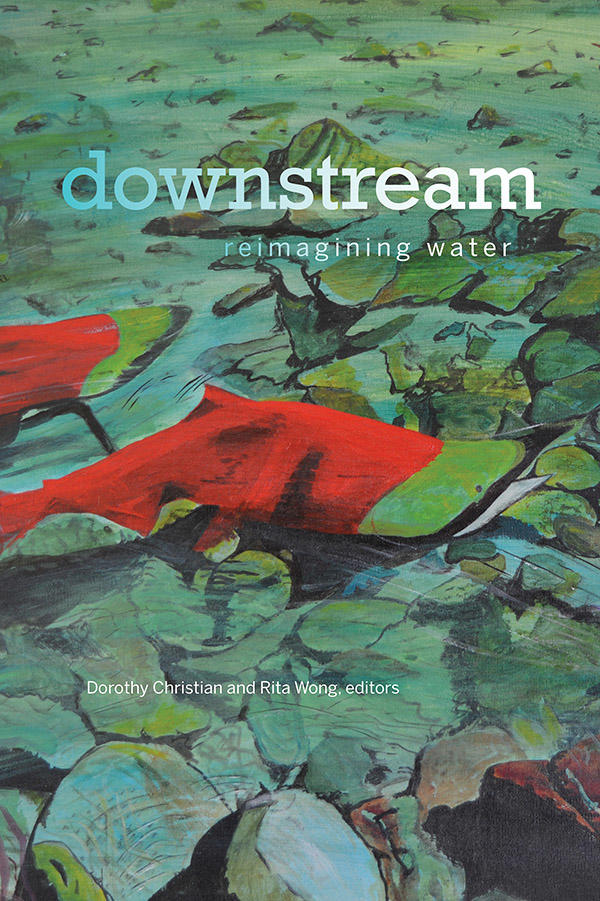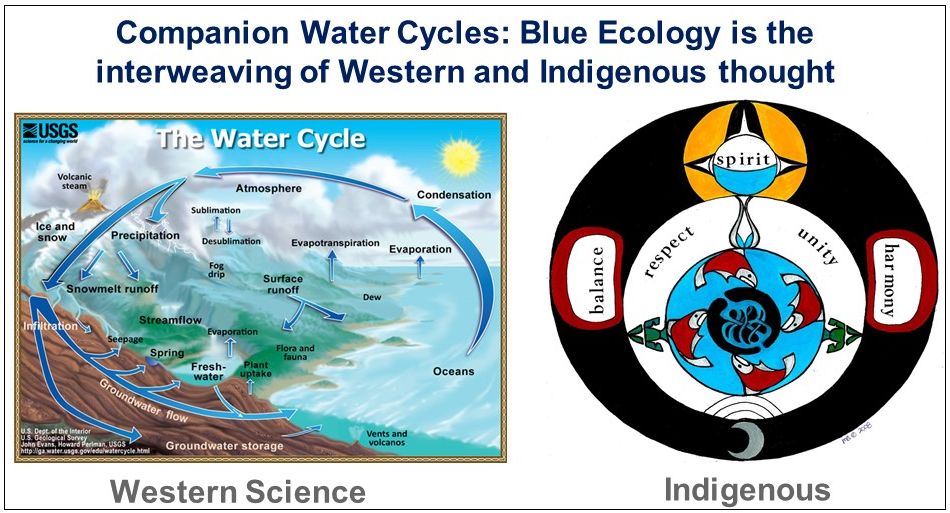Published in 2017, “downstream: reimagining water” is an anthology that envisions an intergenerational, culturally inclusive, participatory water ethic to tackle climate change; and includes a chapter by Michael Blackstock on ‘interweaving’
Note to Reader:
Water has captured countless writers’ imagination, appearing as subject, image, and metaphor in every genre of writing, but with climate change and pollution, our collective relationship to water is changing.
Editors Rita Wong and Dorothy Christian have dug into the literary, ecological, and emotional significance of H2O in downstream: reimagining water (Wilfrid Laurier University Press). They have gathered together authors, scientists, scholars, environmentalists, and activists for the definitive text on water and its importance in our lives; physically, environmentally, and imaginatively.
The contributors include Michael Blackstock. He is an independent scholar, professional forester and chartered mediator of European and Gitxsan descent. His vision for interweaving First Nations cultural knowledge and Western science – Blue Ecology – is especially powerful. In addition to contributing a chapter, Michael painted he book’s cover, entitled “Adams River Sockeye Run”.
Water-based Ecology, Indigenous Perspectives and Global Warming
According to Dr. Dorothy Christian, co-editor, “downstream: reimagining water brings together artists, writers, scientists, scholars, environmentalists, and activists who understand that our shared human need for clean water is crucial to building peace and good relationships with one another and the planet.”
“This book explores the key roles that culture, arts, and the humanities play in supporting healthy water-based ecology and provides local, global, and Indigenous perspectives on water that help to guide our societies in a time of global warming,” explains Dorothy Christian.
On Reaching Out to Non-Indigenous Communities
 Dorothy Christian Cucw-la7 is of the Secwepemc and Syilx Nations of interior of BC. Her doctoral research, “Gathering Knowledge: Indigenous Methodologies of Land/Place-Based Visual Stories and Visual Sovereignty” looks at the role of language, land and cultural stories in contemporary visual storytelling.
Dorothy Christian Cucw-la7 is of the Secwepemc and Syilx Nations of interior of BC. Her doctoral research, “Gathering Knowledge: Indigenous Methodologies of Land/Place-Based Visual Stories and Visual Sovereignty” looks at the role of language, land and cultural stories in contemporary visual storytelling.
Dorothy Christian is dedicated to building and strengthening any alliances with non-Indigenous communities who are open to hearing how Indigenous ways of knowing informs relationships amongst all living things, including the seen and unseen beings.
Towards an Intergenerational Water Ethic
“We live in times where protection of water is becoming increasingly urgent. We need to nourish a culture that pays attention to and actively cares for water; creative practice and the arts play an important role in supporting the cultural shifts hat are needed if humans are to survive on this earth in the long term,” states Rita Wong, co-editor. She has written four books of poetry.She teaches at Emily Carr University of Art and Design.
 “So in 2012, we organized a gathering called Downstream: Reimagining Water, to bring together artists, writers, scholars, scientists, activists, and key knowledge keepers to share their work with water. Many of the presenters also contributed to the book.
“So in 2012, we organized a gathering called Downstream: Reimagining Water, to bring together artists, writers, scholars, scientists, activists, and key knowledge keepers to share their work with water. Many of the presenters also contributed to the book.
“The contributions range from practical to visionary, and each of the four sections closes with a poem to encourage personal freedom along with collective care.”
Rita Wong explains that, “This book contributes to the formation of an intergenerational, culturally inclusive, participatory water ethic. Such an ethic arises from intellectual courage, spiritual responsibilities, practical knowledge, and deep appreciation for human dependence on water for a meaningful quality of life.
“Downstream illuminates how water teaches us interdependence with other humans and living creatures, both near and far.”
“Blue Ecology is just a starting point in this new era of interweaving,” states Michael Blackstock
“The book ‘downstream: reimagining water’ is an anthology,” explains Michael Blackstock. “My chapter is titled Interweaving Water.”
Getting from Sovereign to Collaborative!
“It outlines four steps toward transforming sovereign knowledge into collaborative knowledge: (1) humility, (2) transcending, (3) interweaving, and finally (4) transformation. I  illustrate this process using the theory of Blue Ecology.”
illustrate this process using the theory of Blue Ecology.”
“Our children’s children will be faced with daunting, complex, and urgent environmental problems. The impending crisis requires us to begin to lay a foundation for our children’s children to have a starting point, and some options to grasp in the urgent moment. We owe them hope.”
HUMILITY:
“I view Western science and Indigenous ways of knowing as sovereign entities. A great deal of energy goes into rationalizing, promoting, and protecting an epistemology. However, now we need to acknowledge that we don’t have all the answers.”
“We can build a collaborative epistemological framework if we transcend sovereign contemporary narrative’s boundaries, and literally mine each epistemology for gems that can be interwoven in a collaborative manner.”
NOTE: Epistemology is the branch of philosophy concerned with the theory of knowledge. Epistemology studies the nature of knowledge, justification, and the rationality of belief.
TRANSCENDENCE:
“Curiosity about other cultures draws us into a better understanding, and allows us to contrast and compare two worlds. The product of curiosity is an analysis whereby comparison and contrast enable the interweaving process.”
“Once I understood the strengths and contrasts of each perspective on water, I was ready for the interweaving process and published papers that showed how interweaving could happen.
INTERWEAVING:
“Interweaving is about creating a new form of knowledge through collaboration by interweaving useful threads from each way of knowing into a more robust way.”
“Interweaving is not integration, just as equality is not about assimilation and creativity is not empirical. Interweaving is collaborative and incremental rather than a revolutionary process. Collaborators identify packets of knowledge that would benefit from the interweaving process.”
“Blue Ecology is an ecological philosophy, which emerged from interweaving First Nations and Western thought. It is meant to be a companion because it augments existing Western science hydrology rather than displacing this knowledge.”
NOTE: Blue Ecology aligns with the whole-system, water balance approach that the Partnership for Water Sustainability in BC champions for restoration of watershed function within the built environment.
TRANSFORMATION:
“The main axiom of transformation is: It costs you nothing to change your attitude. A new collaborative knowledge attitude will open up new worlds of possibility.”
“The Blue Ecology vision is collaborative, not competitive,” emphasizes Michael Blackstock.
A New Way of Looking at Water
“Hope is not a passive desire but an active attitude.”
“I really see the value of each culture being genuinely curious about each other and willing to interweave to resolve disputes: This is my action.”
“Now is the time to act on the belief that if we interweave our strengths as traditional knowledge keepers, scientists, poets, artists, and architects in a collaborative manner, we can make a difference.”
“Blue Ecology is an incremental example of how we can interweave cultural perspectives on water, but that is just a starting point in this new era of interweaving.”
“The shared vision of the book contributors is that ‘downstream: reimagining water’ will contribute to the formation of an intergenerational, culturally inclusive, participatory water ethic,” concludes Michael Blackstock.

Blue Ecology water cycle and principles, designed by Michael D. Blackstock as a companion to the conventional science-based Water Cycle.



